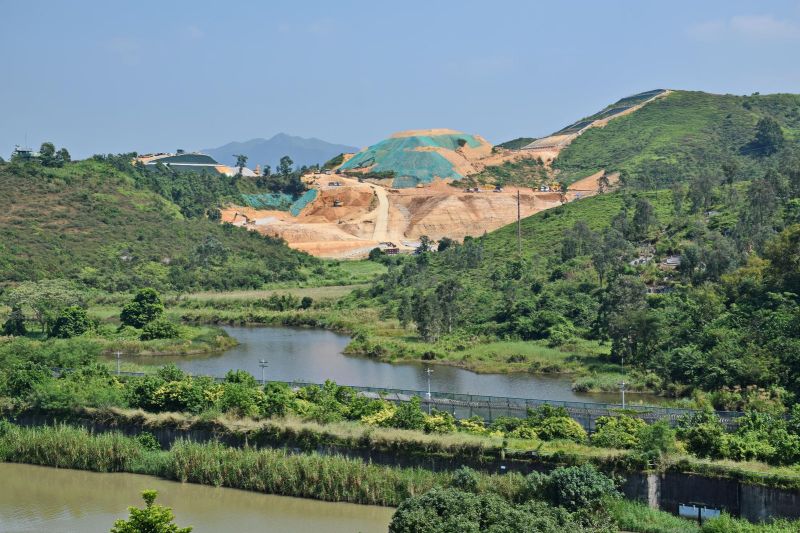Shen Jun
The Resting Place
People often say that the things that influence someone’s life are “first, fate; second, luck; third, fengshui; fourth, cultivate good merits; and fifth, one’s education.” It seems that where there would be a pattern, a technique of control can be produced. Imperial palaces and mausolea, as well as family homes and ancestral temples, had to be considered equally carefully, because there is a long-standing belief in Chinese culture that, when ancestors are at peace, their descendants will be blessed and protected.
The development of modern enlightenment has dispelled these traditional beliefs, and fengshui has been simplified from the study of heaven and earth to a practical formula. Even though everything could be calculated, people are nevertheless constrained by their realities. In a place like Hong Kong with unaffordable property prices, average people would have spent half of their life’s effort to buy their own homes. If they luck into public housing only to find it contains some bad fengshui, they would have to comfort themselves with the idea that fengshui exists only if they believe it does.
However, not only finding a home for the living is difficult, finding a place for the deceased is equally fraught. The seventeen public cemeteries in Hong Kong have average waiting lists of five years, and families don’t have choice over the location or setting. Alternatively, a columbarium niche at a private cemetery can cost anywhere from several hundred thousand to over a million HKD.
As the Greater Bay Area redefined regional possibilities more Hong Kongers have chosen to move north and buy property — both for the living and the dead. Since 2010, the Hong Kong SAR Government has begun identifying land, and three years later proposed the construction of the Sandy Ridge Super Cemetery City near the Luohu border crossing south of the Shenzhen River. This project would provide a funeral home with thirty reception rooms, a crematorium with ten furnaces, and 200,000 columbarium niches. Being questioned whether this 'super cemetery city' is part of the Greater Bay Area vision or a Hong Kong-centric initiative, it unsurprisingly met with strong opposition from Shenzhen residents. Some say that, in the Greater Bay Area context, the idea of “remote” should be redefined.
This “super” project, which was originally slated for completion in ten years, was abandoned in 2023, but alternative arrangements for the ancestors to move northward. According to Hong Kong government regulations, families can apply to the Food and Environmental Hygiene Department for a “Permit for the Removal of a Dead Body from Hong Kong,” which allows them to cross the border, and the reverse applies as well. Following that, businesses in the Greater Bay Area have started offering comprehensive funeral services, ensuring the smooth journey for the deceased across the border and memorial visits of their families=. We do not know if re-defining borders will resolve practical issues for ordinary people, or even strengthen regional familial ties, but it seems to have created a subterranean Greater Bay Area.

Sandy Ridge Super Cemetery City construction site, 2019
Image courtesy Wikipedia user Baycrest